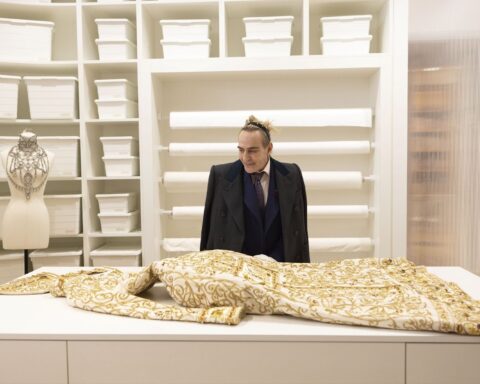Tales from a Prison Cell
(Hungary/Croatia/UK, 80 min.)
Dir. Ábel Visky
Programme: Artscapes (World Premiere)
A Hungarian prison might not be the place one expects to encounter uplifting children’s stories. However, Tales from a Prison Cell ingeniously conveys how sparks of inspiration emerge in the most astonishing places. This film by Ábel Visky offers a surprising perspective on life in prison. Tales from a Prison Cell explores how creativity can be liberating, therapeutic, and rehabilitating as individuals cathartically explore their demons through art.
The premise of Tales from a Prison is that imagination is the key to freedom. Visky presents a novel idea in which convicts create children’s stories, which his production team then adapts into short films with the participation of the inmates and their children. The film shares the tales of three men—Gábor, Zoltá, and Tibor—as they serve sentences ranging from five to eight years for various violent crimes. Although the film introduces each of the three inmates in their claustrophobic cells and lets them explain the events that brought them to prison, it defines them not by their crimes but their shared desire to return to society and repair the relationships with family members left behind. One sees no evidence of violent men, but rather images of ordinary people learning what it means to be a responsible husband, partner, or father figure.
Gábor creates a story about a young piglet who is a poor orphan growing up strong but alone in the dangerous woods. The piglet navigates wolves and foxes, finding confidence in his resilient spirit and cunning intuition. The fable is an obvious metaphor for Gábor’s sense of his failures as a parent, having left his son without a father and his girlfriend without a partner to help raise the boy. (Although Gábor’s partner is visibly miffed by his decision to make the piglet an orphan, which she takes as an affront to her parenting.) The film version sees Gábor’s son don a pig costume and run wild in the woods while his grandmother plays the sly fox and his dad watches with the crew. The kid is a natural talent in front of the camera and Gábor’s project easily stands out as the both the most compelling story and the most fluidly cinematic tale of the three storybook tales.
The child’s book of true crime continues with Zoltá’s story about an evil king. The tale has a ludicrously convoluted plot that involves stolen teeth, knights, and everything but the kitchen sink. However, his three kids embrace the madcap energy of the project, particularly his daughter, who struggles with concerns for body image but finds the film shoot an empowering opportunity. In Zoltá’s story, Tales from a Prison Cell provides an intimate window into a family’s effort to restore ties following a difficult period. They’re the only family unit that remains intact through the ordeal—which is not a spoiler given the conversations that both Gábor and Tibor have with partners in the early scenes. However, Zoltá’s impending return brings mixed emotions as his wife and kids wonder about the dynamic of the home upon his return. The film obviously proves invaluable as an exercise for rediscovering what it means to be a family.
The third film offers a tale of an old man and the sea. Tibor, who lives in prison with his father, Tibor, Sr., creates a tale that disrupts the multigenerational cycle of institutionalisation. Although Tibor has no offspring of his own, he loves his girlfriend’s four kids dearly, particularly her young daughter, but there are obvious signs of strain on the relationship. His project is not so much an act of bringing the family together, but of creating something that endures—a memento—to share with the young girl as their relationship comes to its inevitable end.
Visky and his team realise the three short films through fanciful feats of animation. The three films, all of which we see during their production stages and upon completion, are intriguing hybrid works of their own. The kids enact metaphorical journeys that assist their fathers or father figures on the roads to recover. In between the production vignettes, Visky offers stark verité footage of the three inmates as they dive into the creative process. The film witnesses a progressive form of rehabilitation as the storytelling exercise gives the men an outlet through which they understand the impact of their behaviour on the people closest to them. The film invites a wider conversation on the need to overhaul correctional facilities and provide inmates with creative exercises in reintegration. Tales from a Prison Cell is a fascinating portrait of the freeing power of the imagination.
Tales from a Prison Cell screens at Hot Docs’ online festival beginning May 28.








